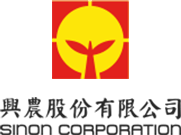Environmental-friendly
GHG Management
In face of increasing global warming, the Company deeply understands the importance of greenhouse gases management. Thus, the WANG -TIEN FACTORY has voluntarily filed for the greenhouse gases emissions each quarter since 2014. We get hold of the sources and characteristics of the greenhouse gases emissions and aim to do better in self-management for energy saving and carbon reduction. Based on the emission source inventory steps, find the activities and facilities for possible GHGs emissions. List and decide whether they are in the scope of inventory.
The Company conducted the 2022 GHG inventory according to the ISO14064-1:2018 principles:
Organizational and Reporting Boundaries
- Organizational boundary: The Company adopts an operational control approach to define the organizational inventory boundary.
- Inventory boundary: Including all management processes and facilities of the Wang-Tien Factory, Wang-Tien 2nd Factory, Biological Factory, and Dadu Factory and the Zhangbin Plant of the Sinon Corporation, with the following main contents:
- Manufacture of crop protection and plastic products.
- Public amenities: Office area, lounge area, employee cafeteria, employee dormitory, and warehouse.
- Type of GHG Inventory: CO2, CH4, N2O, HFCs, PFCs, SF6, and NF3.
- GHG information for the period: 01 January 2022 to 31 December 2022.
- The selected GHG emission factors are based on the latest emission factors published by the IPCC, the Environmental Protection Administration of the Executive Yuan, or other competent authorities.
- Direct emissions: Greenhouse Gas Emission Factor Table (6.0.4), EPA.
- Indirect emissions:
- Electricity emission factor is 0.495 kgCO2e/kwh (Announced by Bureau of Energy, Ministry of Economic Affairs in 2023).
- The secondary database has Carbon Footprint Information Platform, SimPro9.3.
- The IPCC 2021 AR6 GWP values are applied in this inventory.
Organizational and Reporting Boundaries
In order to enhance the credibility of 2022 GHG inventory information and report, and to improve the quality of the data, we have appointed a third-party independent organization, “SGS Taiwan Ltd.” to verify the GHG inventory.
【GHG Verification Statement】
- Scope of verification: Same as the scope of the inventory.
- The verification has followed ISO 14064-1:2018 Guidance for Greenhouse Gas Inventories.
- Verification assurance levels: Reasonable assurance levels for category 1 and category 2, and limited assurance levels for category 3 till category 6.
| Year | 2021 | 2022 |
|---|---|---|
| Scope 1: Direct GHG emissions | 6,354.3736 | 12,737.7913 |
| Scope 2: Indirect GHG emission-Imported energy | 19,878.0000 | 22,959.3724 |
| Scope 3: Other indirect GHG emission | --- | 46,358.768 |
| Year |
Base Year 2020
|
2021 | 2022 | Target Year 2025 |
|---|---|---|---|---|
| Scope 1 & Scope 2 GHGs Emissions Volume |
15,545.20 | 15,971.40 | 17,190.03 | Reduction of GHG emissions by 5% from the base year |
| Increases or decreases % from the Base Year | --- | 2.7% | 10.3% |
Energy Saving and Carbon Reduction Promotion
The Company is committed to the promotion of energy saving and waste reduction to increase various energy and resource usage rate. According to the stipulations of the “Energy Administration Act” by the Ministry of Economic Affairs (MOEA), the Company set 1% as the goal for the annual electricity saving rate, promoting various energy saving action projects. The latest energy saving technologies and equipment is selected in the design phase to raise the energy use efficiency of the equipment and to save fuels.
The energy used by the production factory of the WANG-TIEN FACTORY Area is diesel fuel, natural gas, and externally purchased electricity. In pursuit of clean energy and improving fixed source pollution emissions, since 2016, all the heavy fuel oil has been replaced by natural gas; Diesel fuel is mainly used for emergency electricity generator, forklift, trucks and so on heavy transport equipment.

In 2022, a total of 13 energy-saving and power-saving measures were implemented by WANG-TIEN FACTORY Area, which saved a total of 839,106 kWh of power throughout the year, and the annual power-saving rate reached 2.23%, equivalent to a reduction of 427 tCO2e. The internal energy consumption of the organization was approximately 309,131 GJ, and the energy intensity decreased from 28.6 (GJ/ million Revenue of crop protection) in 2021 to 20.29 (GJ/ million Revenue of crop protection) in 2022.
| Source of Energy Use | 2020 | 2021 | 2022 | |
|---|---|---|---|---|
| Non-renewable Energy Use | Diesel fuel | 2,249.32 | 2,143.88 | 2,108.74 |
| Natural gas | 153,747.72 | 167,879.90 | 174,429.14 | |
| Purchased Energy | Externally purchased energy | 138,834.49 | 142,481.67 | 132,592.70 |
| Energy for Sale | Electricity for sale | 5,290.00 | 5,144.57 | 5,062.32 |
| A. Total energy consumption volume (GJ) | 294,831.53 | 312,505.45 | 309,131.58 | |
| B. Sales for the crop protection products (NTD: million dollars) | $10,123 | $10,937 | $15,230 | |
| C. Energy intensity (A/B) | 29.1 | 28.6 | 20.29 | |
Note2: The data source for externally purchased energy, natural gas, and electricity for sale is based on the statistics of the energy bills; the diesel fuel data source is based on the verified statistics for the annual fuel purchase.
Note3: Energy consumption = Fuel usage volume x heat value of fuel (based on the announced transfer factor of the Bureau of Energy, MOEA: Electricity power 860 Kcal/KWh, natural gas 9,000 Kcal/m3, diesel fuel 8,400 Kcal/L, among which 1 Kcal is 4.184 KJ).
Energy Management Goal

Note1: The energy saving volume unit kWh is converted into the unit, GJ = Energy saving volume (kWh) x heat value of fuel (based on the announced transfer factor of the Bureau of Energy, MOEA: Electricity power 860 Kcal/KWh, among which 1 Kcal is 4.184 KJ).
Note2: The carbon reduction volume is calculated adopting the 2021 electricity carbon emission factor 0.509 kg CO2e/kWh announced by the Bureau of Energy, MOEA.
Note3: Annual electricity saving rate = Annual electricity saving volume/ (annual electricity volume + annual electricity uses volume) * 100%.


